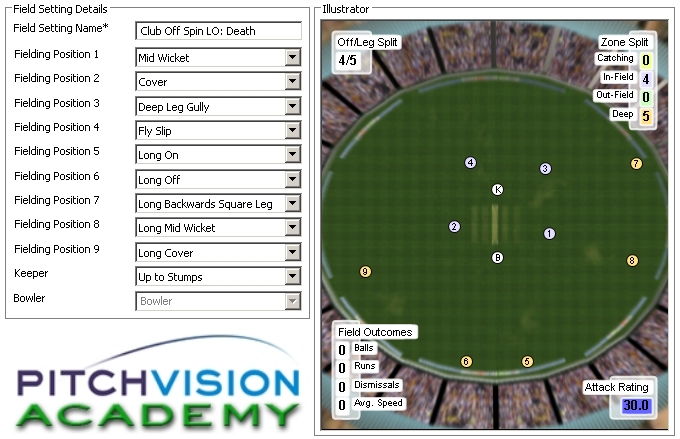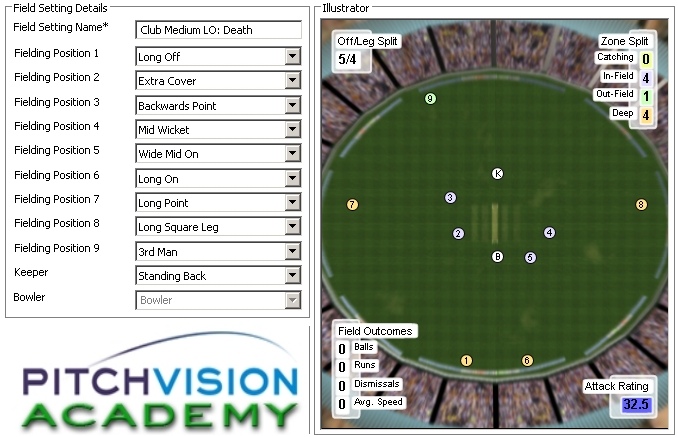How to Win the Battle of the Death Overs
This is the final part of the blueprint of a one day innings series we look at the tactics of a typical club game in the last 10 overs. Part one is here, part two is here.
The death of any innings is a shoot out. The battle is about who can keep control when the shackles are off.
This is exactly what happened to Watsonian skipper Craig Wright in the match against Grange. With the score on 151-4 and momentum swinging back and forth, the stage was set.
What happened next was a perfect example of controlling runs by taking wickets.
Finishing with spin
Who better to trust than Wright himself bowling off spin?
You may say it’s a bold tactic to leave your spin option to bowl 5 overs from an end at the death. Usually spinners give control in the middle and become cannon fodder at the end.
However, Wright is a tall former seamer who knows about death bowling. He put fielders out and set about bowling a tight line at the stumps, with a spearing yorker as a variation.
Here is his field which he had no need to deviate:

The rules require 4 inside the fielding circle, the rest of the field were placed to cut off the big shots.
A variation to this field is to bring deep cover back inside the ring. Most club players can’t hit out to both sides of the wicket so bringing him in would open a gap on the off side that is a risky shot. The batsman taking it on will often get himself out.
Finishing with seam
At the other end the seamers (Chalmers and McKenna) did the normal job of bowling full and straight with a field like this:

This stage of the game is not much for tactics.
Batsmen are trying to hit every ball; bowlers are trying to stop every ball being hit with full and straight bowling and the field is spread wide. As a bowler you are hoping the batsman doesn’t get hold of you and the best way to do that is to bowl a good ball.
The skills at this stage are about keeping your head under pressure. Ideally you need a good yorker, a decent slower ball and the ability to hit your lengths when batsmen are coming at you.
In this game, the Watsonian bowlers stayed on target. Grange lost their last 6 wickets in the death overs. Despite some lusty leg side hitting, a couple of LBWs showed that the bowling was on top.
As wickets fell, Watsonian made sure the big runs were not forthcoming. Grange could easily have scored 80 or 90 runs at this stage but with wickets falling Grange were bowled out in the last over for 211.
Overall, it was a strong tactical performance from Watsonian throughout the innings. Limited over games tend to follow a certain formula. If you know how to control the game at every stage you can manage the runs scored.
To keep following the exploits of Watsonian CC in the 2011 summer get the PitchVision Academy newsletter.
- Login to post comments

